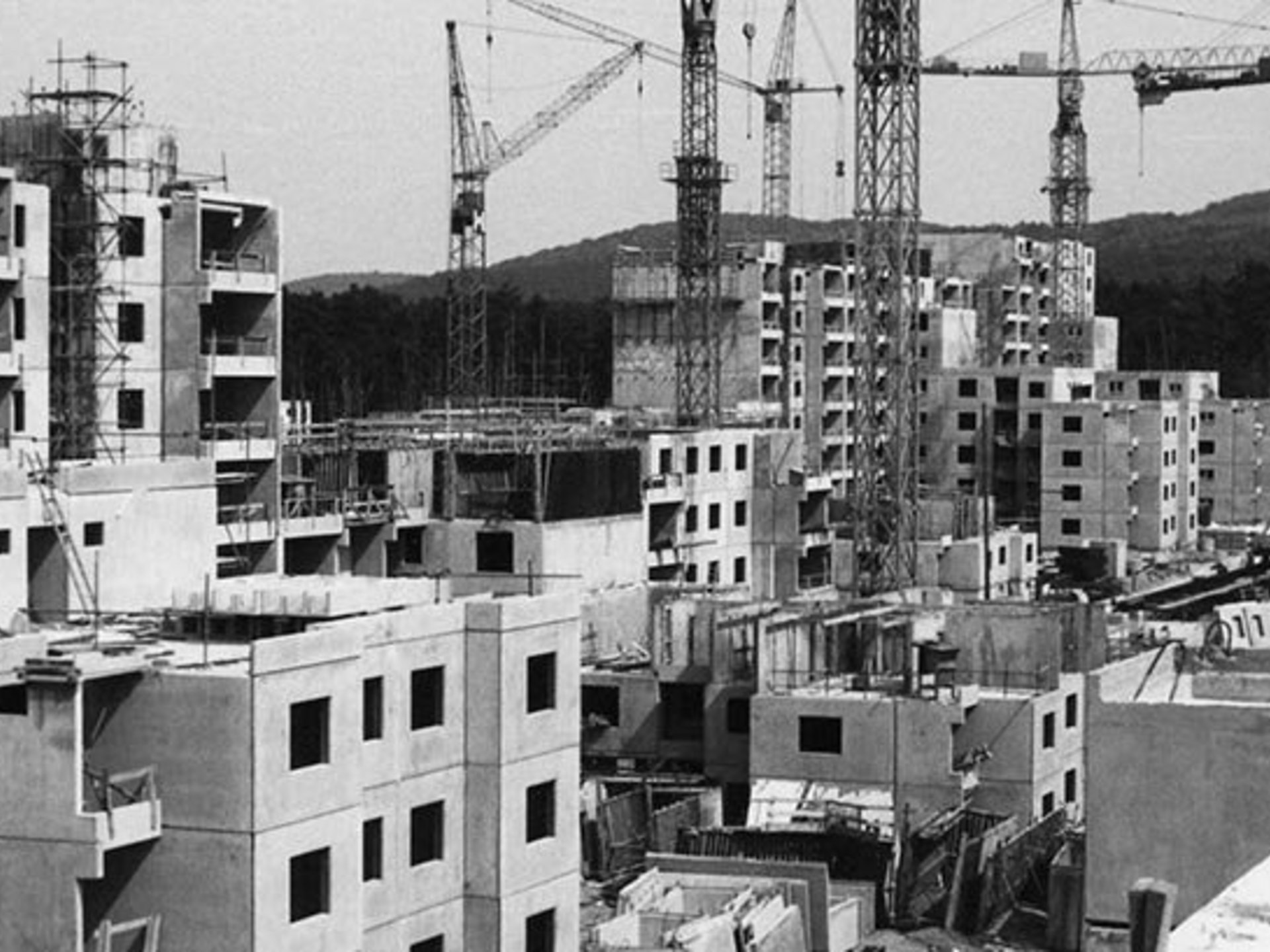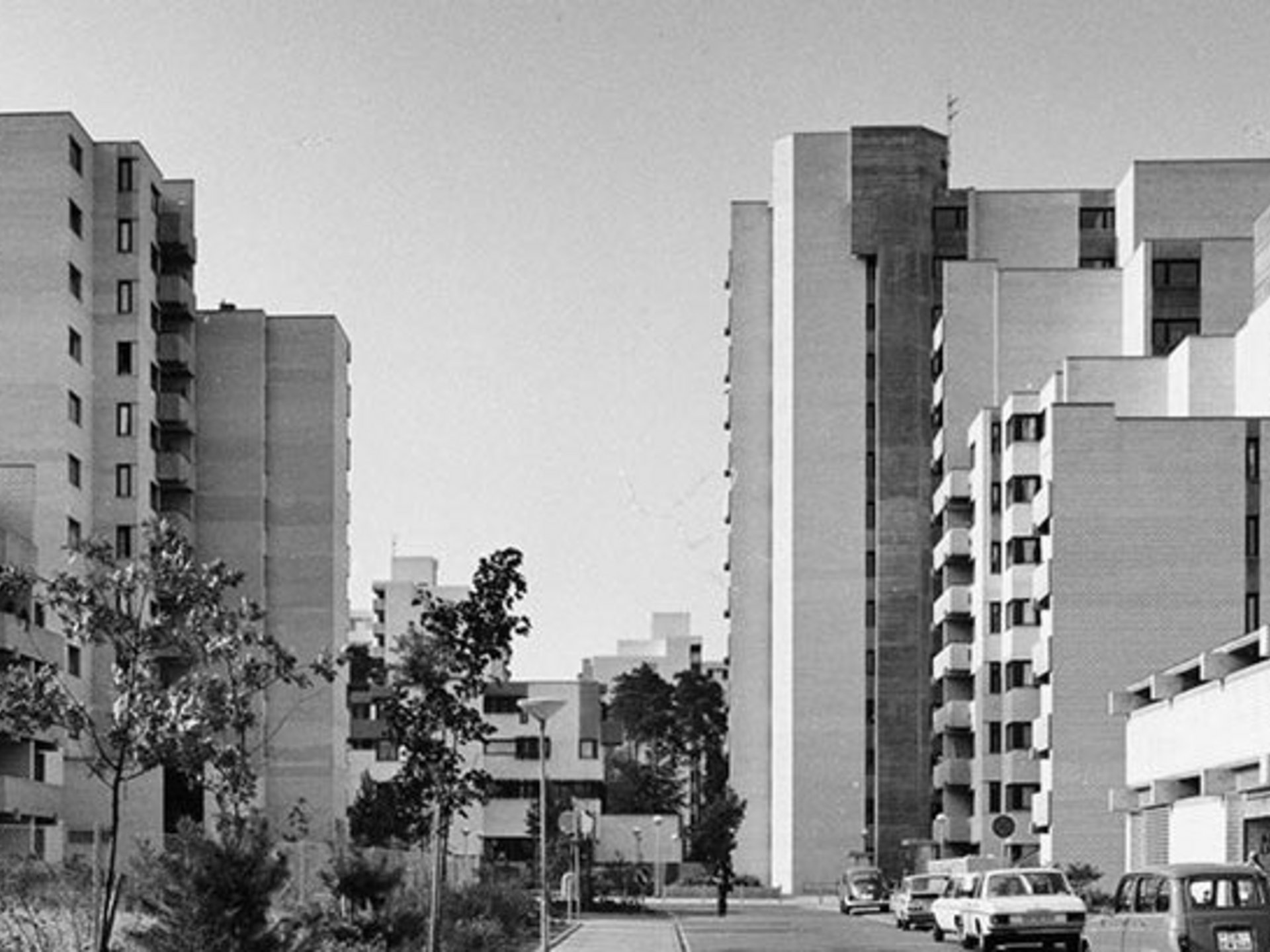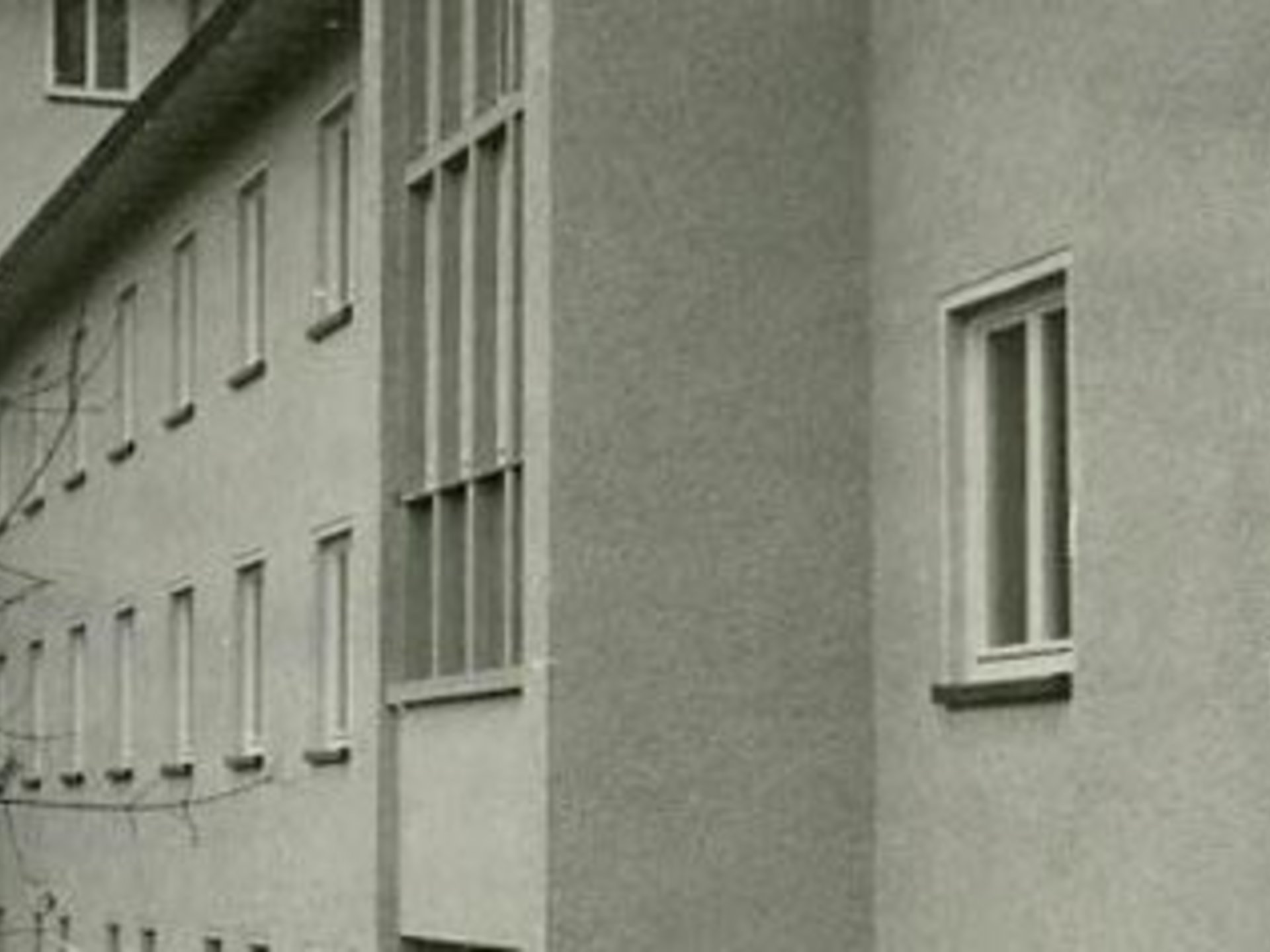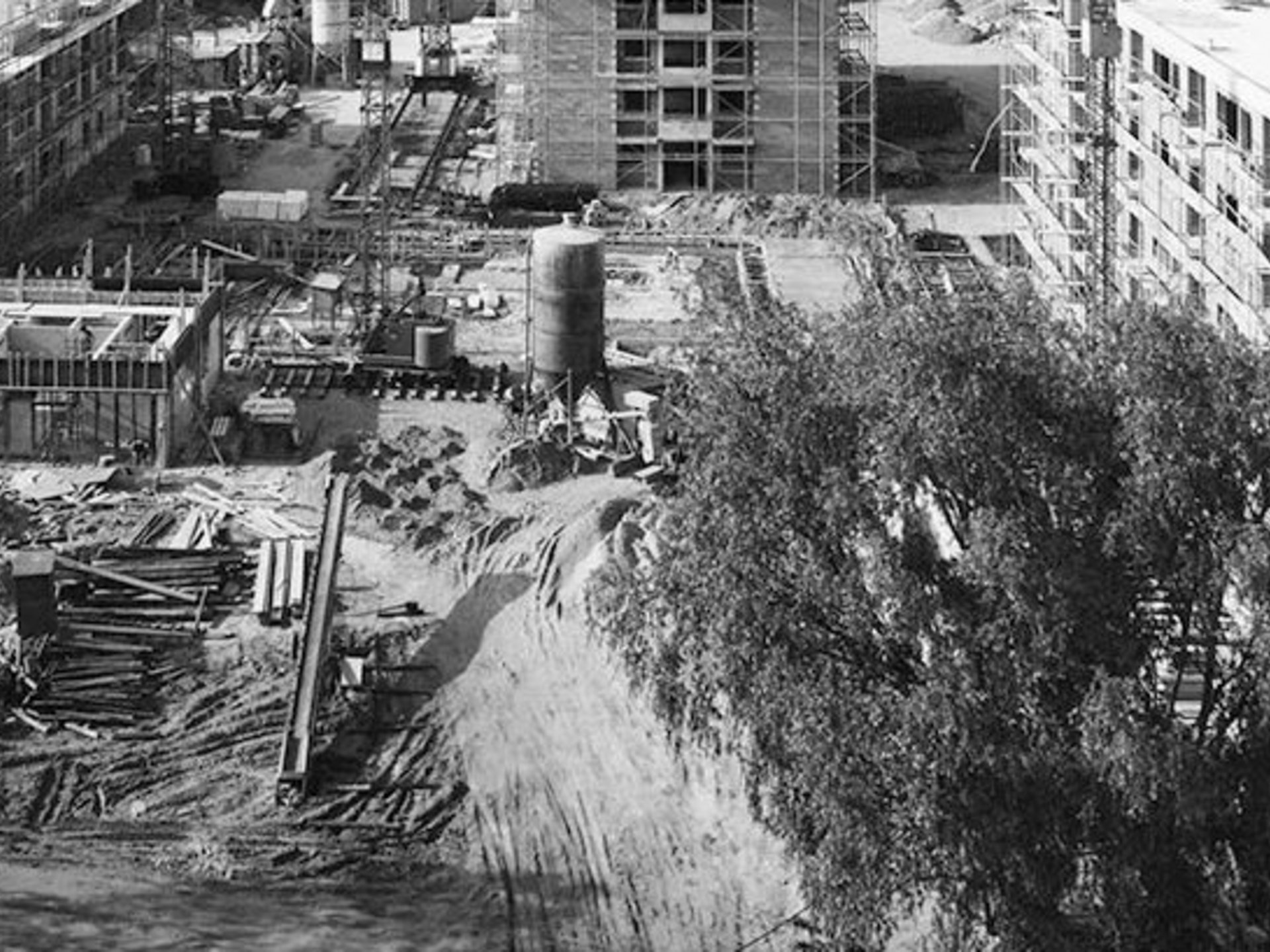Neighbourhood development in Eberstadt-Süd
The Eberstadt-Süd neighbourhood development will be the Bauverein's most comprehensive project to date. The new neighbourhood is developed and built on in three phases. The first construction phase with 523 flats is completed in mid-1967. The South II development area with a further 179 flats is ready for occupancy in July 1974. Eberstadt-Süd III - a neighbourhood with flats, a shopping centre, restaurants and green spaces - celebrates its topping-out ceremony in the same year.
26 years on the Executive Board
Since 1968, Heinz Reinhard, a trained construction engineer and member of the SPD, has been a key figure on the Bauverein's board. He steered the fortunes of the company for 26 years and was the "face" of the building association for many years.
Portfolio comprises 6,000 flats
At the end of the 1960s, the Bauverein für Arbeiterwohnungen managed more than 6,000 flats in Darmstadt.
Bäko-Block honoured
In 1978, the so-called Bäko-Block is honoured as an "exemplary building in the state of Hesse" by the Hessian Minister of Finance. The building in the new Martinsviertel redevelopment area provides social housing as well as a learning and play centre.
Portfolio grows beyond city limits
Bauverein builds outside the Darmstadt city limits for the first time in 1973, when two buildings with a total of 52 residential units are constructed in Wixhausen - which had not yet been incorporated at the time. Further flats follow in Pfungstadt, Weiterstadt, Griesheim and Ober-Ramstadt.
Senior citizens' residential complex being built in Schwarzen Weg
The need for senior-friendly housing grew in the 1970s. As a result, in 1975/76 and 1984, the Bauverein's first senior citizens' residential complex was built on Schwarzen Weg with around 200 flats. Right next door, a multi-generation house for senior citizens and families with children, the so-called "Symbiosegebäude", was built in 1977.





Head office in Bismarckstraße
In September 1977, the company moves into a new office at Bismarckstraße 15, the former sister home. Here, a new IT system ushers in the computer age in property management: rental and payroll accounting, mortgage management and property management are now managed by computer.
First tenant advisory board elected
In May/June 1972, a tenants' representative body is set up for the first time: In the first tenant council election, one council member and one deputy can be elected in each of 15 constituencies. This makes Bauverein one of the first housing associations with a tenants' advisory board.
Newsletter for tenants
Since 1973, tenants have been able to read important company news in the "Mieterinformation", a quarterly newsletter published by the Bauverein.
Housing estate in Kranichstein
A housing estate for different social groups - families with disabled relatives, young couples, students as well as late returnees and refugees - was built in Kranichstein in the 1970s. The K 4 development area is the Bauverein's first major project in the north-eastern neighbourhood after the high-rise building in Grundstraße.
Modernisation of old buildings
The modernisation of old buildings was stepped up in the 1970s, as many flats no longer met the general standard. Washbasins with mixer taps, floor or central heating, communal aerials or double-glazed windows upgrade the ageing properties. Between 1972 and 1979, the Bauverein therefore modernised around 150 flats each year.
High demand for flats
Demand on the housing market is growing rapidly: in 1980, 150 people a month applied for a Bauverein flat. Small flats for students, senior citizens and singles are in particular demand.
Maintaining existing buildings instead of building new ones
In the 1980s, too, the motto was "maintaining existing properties instead of building new ones". In 1987, for example, only 19 new flats were created but a total of 561 flats were modernised.


